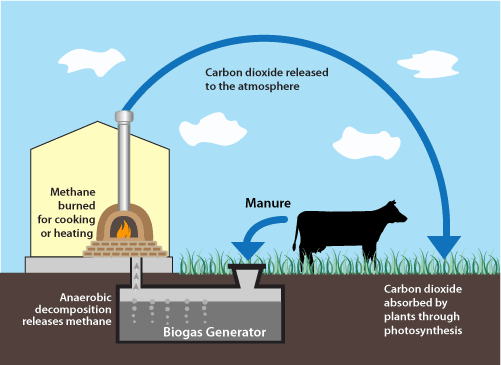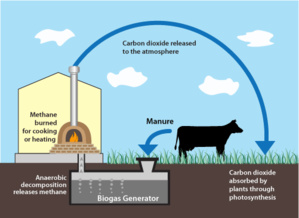Dailycsr.com – 29 December 2015 – California has the “most cost-effective investments” choice before it, whereby it can pour money into methane digesters for dairies. Likewise, the country can also bring down its “greenhouse gas emissions”, besides nearing its “climate change prevention goals”, revealed Ramboll Environ’s new study.
The report look at the procedures of the “how cap and trade auction” and their investment patterns carried out by the California Air Resources Board.
The fund for the project currently comes from the state with a “a return on investment” atht ranges from $2 to “$1,250 per metric ton of carbon dioxide equivalents reduced”. On the other hand, the digesters used in dairies signify “one of the most cost effective investments of state funds”. In return, the state will get a “$7 per ton of reduction”.
Methane is a “short-lived climate pollutant” and destroying the said pollutant will push California ahead on the road to address climate change. Once, the short term investment factors are taken into consideration, the cost of reduction per ton will amount to “$2”, whereby making the same “even more cost effective”.
According to California’s Governor Jerry Brown, during his address to COP21 in Paris, “short-lived climate pollutants” need to be tackled and doing so
"...is probably the most immediate challenge, and the most important thing to do leaving this conference."
After this declaration, the Governor also made an announcement in the month September, revealing California’s of “an aggressive effort to reduce methane emissions and other SLCPs”.
Moreover, Mike Hower informs:
“The Governor's emphasis on the importance of reducing SLCPs is backed by the University of California's Climate Solutions Group, which identified SLCP curtailment as the number one ‘science solution’ for reducing greenhouse gases, and highlighted the value of bio-methane as a clean energy source”.
Over two decades methane develops seventy two time more “heat-trapping ability than carbon dioxide”. The source of methane is varied and causes twenty percent of “California's greenhouse gas emissions”. More and more dairies in Canada, New York and Pacific Noerthwest, are utilising their manure by turning the same into biogas through “anaerobic digestion technology”.
Last year, the White House had released a “Biogas Opportunities Roadmap” in order to highlight its importance in economy and environment.
“Biogas systems — which recycle organic material, including cow manure and food waste, into valuable co-products such as renewable energy, fertilizer, separated nutrients and cow bedding — offer a wide range of potential revenue streams, creating jobs and boosting economic development for communities”.
References:
http://www.sustainablebrands.com/
The report look at the procedures of the “how cap and trade auction” and their investment patterns carried out by the California Air Resources Board.
The fund for the project currently comes from the state with a “a return on investment” atht ranges from $2 to “$1,250 per metric ton of carbon dioxide equivalents reduced”. On the other hand, the digesters used in dairies signify “one of the most cost effective investments of state funds”. In return, the state will get a “$7 per ton of reduction”.
Methane is a “short-lived climate pollutant” and destroying the said pollutant will push California ahead on the road to address climate change. Once, the short term investment factors are taken into consideration, the cost of reduction per ton will amount to “$2”, whereby making the same “even more cost effective”.
According to California’s Governor Jerry Brown, during his address to COP21 in Paris, “short-lived climate pollutants” need to be tackled and doing so
"...is probably the most immediate challenge, and the most important thing to do leaving this conference."
After this declaration, the Governor also made an announcement in the month September, revealing California’s of “an aggressive effort to reduce methane emissions and other SLCPs”.
Moreover, Mike Hower informs:
“The Governor's emphasis on the importance of reducing SLCPs is backed by the University of California's Climate Solutions Group, which identified SLCP curtailment as the number one ‘science solution’ for reducing greenhouse gases, and highlighted the value of bio-methane as a clean energy source”.
Over two decades methane develops seventy two time more “heat-trapping ability than carbon dioxide”. The source of methane is varied and causes twenty percent of “California's greenhouse gas emissions”. More and more dairies in Canada, New York and Pacific Noerthwest, are utilising their manure by turning the same into biogas through “anaerobic digestion technology”.
Last year, the White House had released a “Biogas Opportunities Roadmap” in order to highlight its importance in economy and environment.
“Biogas systems — which recycle organic material, including cow manure and food waste, into valuable co-products such as renewable energy, fertilizer, separated nutrients and cow bedding — offer a wide range of potential revenue streams, creating jobs and boosting economic development for communities”.
References:
http://www.sustainablebrands.com/


 Dairy Digesters Will Be Wise Investment For California, Reveal New Study
Dairy Digesters Will Be Wise Investment For California, Reveal New Study





 Companies
Companies